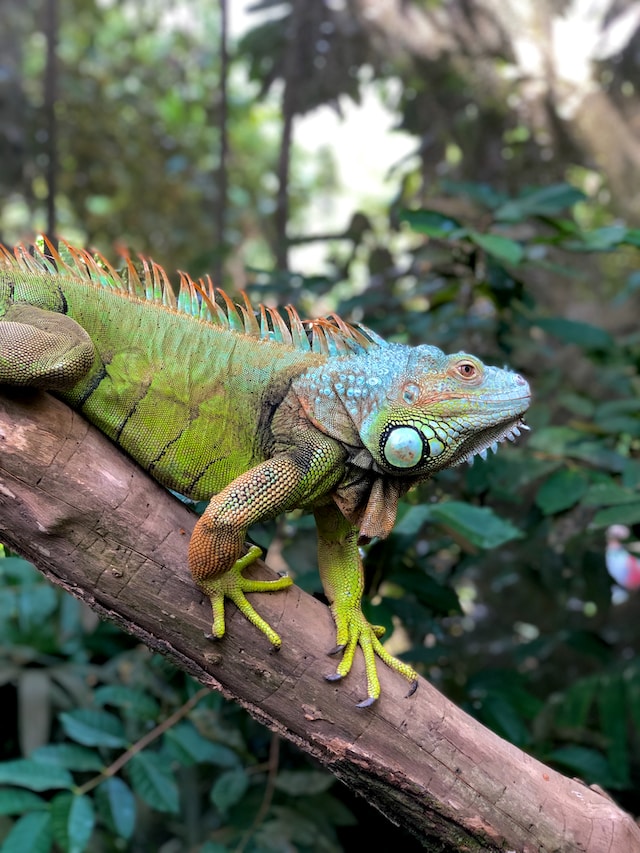
The Fascinating World of Reptiles: Exploring Their Diversity and Adaptations
Contents
- 1 Introduction
- 2 Reptiles Are More Than Just Snakes
- 3 Reptiles Have Been Around Since the Evolution of Land Animals
- 4 Reptiles Are Widely Distributed Throughout the World
- 5 Tropical Regions Have More Reptile Species Than Temperate Regions
- 6 Lizards Have a Long Tail That Can Vary in Length and Shape
- 7 Some Lizard Species Can Change Their Skin Color to Match Their Environment
- 8 The World’s Largest Lizards Are Found in Australia and New Guinea
- 9 Skinks Eat Insects and Other Small Creatures, While Geckos Prey on Insects, Crickets, and Mice
- 10 Turtles Have a Shell Made Out of Their Ribs and Forelimbs That Protects Them From Predators
- 11 Snakes Are Found Worldwide but Are More Abundant in Hot Deserts and Tropical Rainforests than in Other Places
- 12 Conclusion
- 13
Introduction
Reptiles have fascinated me since I was a child. From snakes and lizards to turtles and tortoises, the diversity of reptiles is incredible. You might assume that reptiles are limited to tropical areas, but they’re actually found all over the world—even in places where it’s cold! In this article, we’ll explore what makes reptiles unique from other animals, some fun facts about their diversity around the world, and how evolution has enabled them to adapt so well to changing conditions over time.
Reptiles Are More Than Just Snakes
Reptiles are cold-blooded animals. They have scales, not feathers or hair like birds. Reptiles lay eggs that hatch into babies that look like miniature versions of their parents (with some exceptions). Many reptiles have a backbone and some even have tails!
If you think all this sounds pretty familiar, it should–reptiles share many traits with mammals and birds, but they also have some unique adaptations that set them apart from other groups in the animal kingdom. In addition to being cold-blooded and having scales instead of fur or feathers, reptiles breathe air just like we do; they use lungs instead of gills; and their hearts are divided into three chambers instead of four (like us). Reptile blood pressure changes when they move from hot places to cool ones–you’ll see more about how this works later on in this article!
Reptiles Have Been Around Since the Evolution of Land Animals
They’re the sister group to birds and mammals, and they’ve been around for a long time. Reptiles first appeared on Earth 466 million years ago–long before dinosaurs even existed!
In fact, reptiles were the first animals to leave water and live on land. They started out in shallow streams or ponds where they could bask in sunlight, but eventually some species migrated inland and became terrestrial (meaning “living on land”). As other aquatic creatures evolved into amphibians that could breathe underwater as well as on land, these early reptiles continued to thrive with their unique adaptations for living out of water: scaly skin with scales; external ear openings; eyelids; internal fertilization via copulation rather than laying eggs externally like amphibians do today…
Reptiles Are Widely Distributed Throughout the World
Reptiles are found on every continent except Antarctica, and they can be found in all types of habitats, from deserts to rainforests and from mountain tops to the ocean floor. Lizards, turtles and snakes are the most abundant reptiles worldwide.
There are many reasons why reptiles have been able to colonize so many different habitats around the globe: they are cold-blooded animals whose body temperatures vary with their surroundings; they lack waterproof skin; they don’t lay eggs but give birth live young (like mammals). These characteristics allow them to adapt easily wherever there is sufficient food available for them
Tropical Regions Have More Reptile Species Than Temperate Regions
Most reptiles are found in tropical regions, where they have the widest range of temperatures and habitats to live in. Reptiles are by far the most diverse group of vertebrates, so you can expect to find them living just about anywhere on Earth. They’re found in all parts of the world–except Antarctica–and every continent except Australia (which has no native reptiles). In fact, there are over 10,000 known species of lizards alone!
All reptiles share some basic characteristics: they have scales instead of feathers or fur; they lay eggs rather than give birth live young; their bodies are cold-blooded (they regulate their own body temperature through external means like sun exposure); and most importantly for our purposes here today–they don’t have lungs!
Lizards Have a Long Tail That Can Vary in Length and Shape
The lizard tail is a unique feature that helps lizards move, balance and even fight. The tail can vary in length and can be used as a weapon to ward off predators or other threats. Some lizards have prehensile tails, which means they’re capable of grasping objects with their tails. These species include geckos, skinks (small lizards) and some chameleons like the Jackson’s chameleon pictured above.
Lizard tails come in many shapes and sizes–some are short while others are long; some are thin while others are thick; some have blunt ends while others end in pointed tips. These differences help identify different species of reptiles!
Some Lizard Species Can Change Their Skin Color to Match Their Environment
The ability to change color and texture is known as camouflage. Camouflage helps lizards avoid predators, but it also has other uses:
- A lizard can use its camouflage to hide from predators while it’s resting during the day or sitting on a branch waiting for its next meal.
- When lizards are hunting for food, they may use their coloring to blend in with their surroundings so that prey won’t see them coming!
The World’s Largest Lizards Are Found in Australia and New Guinea
The Komodo dragon (Varanus komodoensis) is a species of lizard that lives on the Indonesian islands of Komodo, Rinca, Flores and Gili Motang. It can grow up to 3 metres (10 feet) long and weigh up to 150 kg (330 pounds). The crocodile monitor (Varanus salvator) is a species of monitor lizard that lives throughout Asia from Pakistan through India and Southeast Asia as far east as Indonesia.[1] They reach lengths of 2 metres (6 ft 7 in), although some may grow over 3 m (9 ft 10 in).[2]
Skinks Eat Insects and Other Small Creatures, While Geckos Prey on Insects, Crickets, and Mice
Skinks are carnivorous, eating insects and other small creatures. The majority of geckos are herbivores that rely on plant material for sustenance. Skinks have sticky tongues, which they use like hands to grab prey from their surroundings; geckos have sticky feet that help them climb walls and ceilings in search of food.
Turtles Have a Shell Made Out of Their Ribs and Forelimbs That Protects Them From Predators
This adaptation helps turtles survive in tropical regions and temperate regions. Turtles can be found in the ocean, on land, in rivers, and lakes.
Snakes Are Found Worldwide but Are More Abundant in Hot Deserts and Tropical Rainforests than in Other Places
Snakes prefer warm, dry climates because their skin dries out easily when it gets wet. They also have to be able to regulate their body temperature by moving between the sun and shade regularly so that they don’t become overheated or chilled from exposure to too much heat or cold.
Snakes play an important role in maintaining ecosystem balance by controlling populations of rodents, lizards and birds that may otherwise harm crops or damage property if they’re not kept under control by predators like snakes!
Conclusion
Reptiles are a fascinating group of animals that have evolved to survive in many different environments. They’re found all over the world, but some species are more common in certain regions than others. Lizards can change their skin color and skinks eat insects! You can learn about these amazing reptiles by reading the rest of this article.



Average Rating